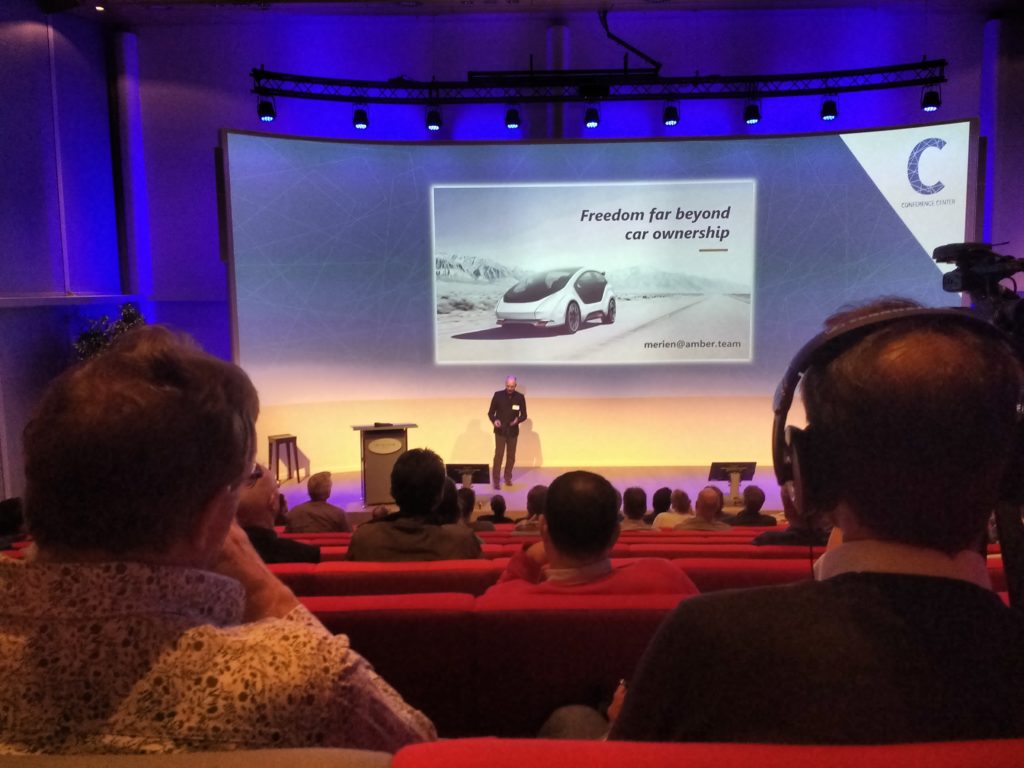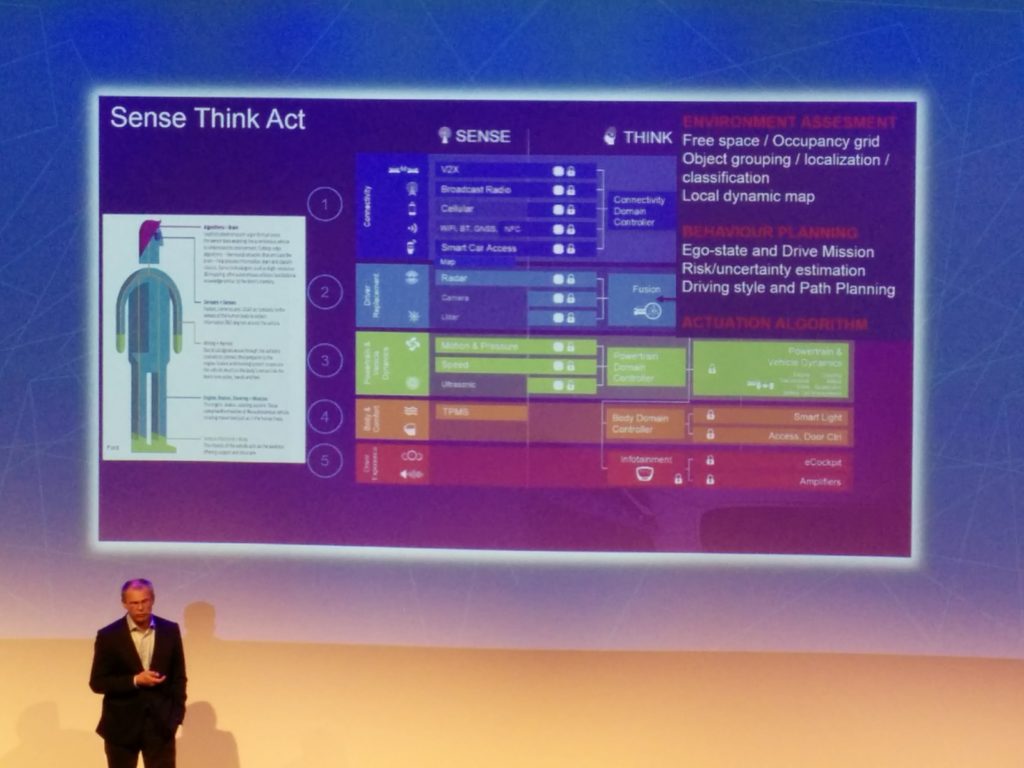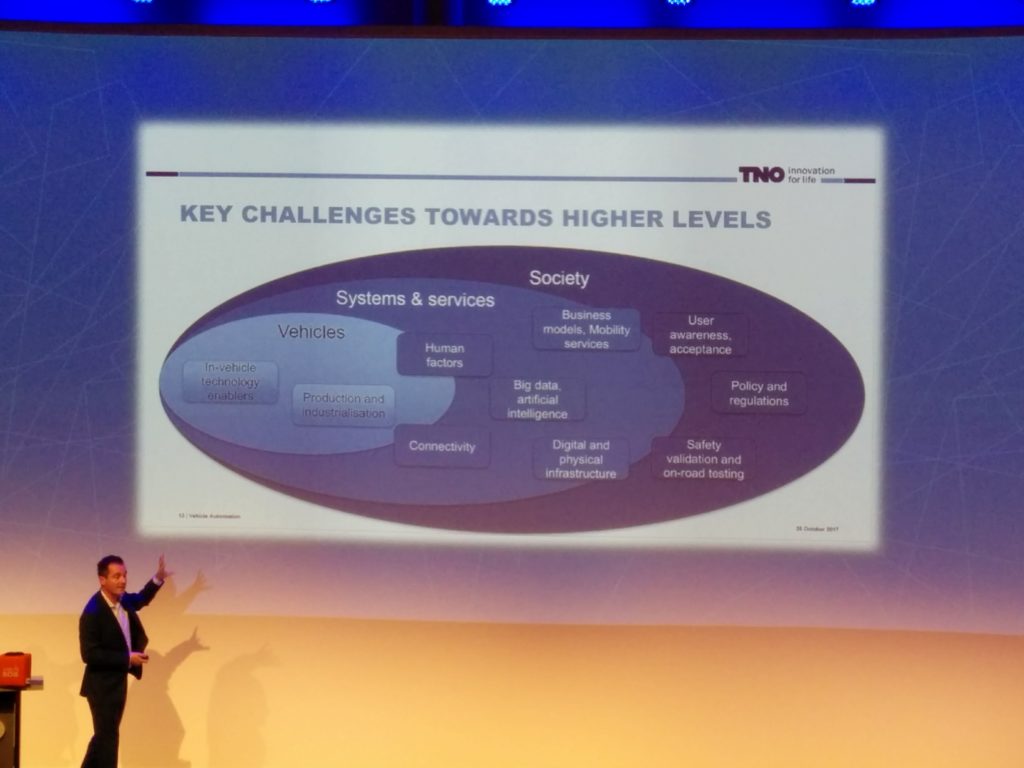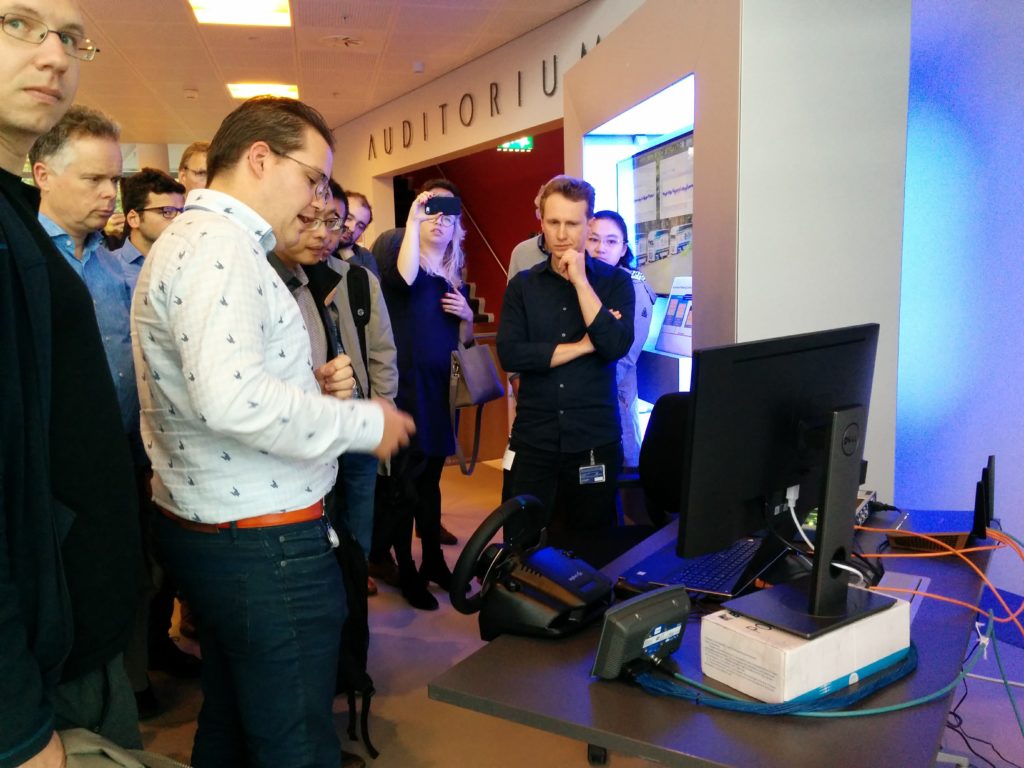A collaboration between High Tech Campus Eindhoven and Automotive Campus Helmond gave us a peek into the future of autonomous driving.
What is the current maturity of the autonomous driving industry? Would you like to order an autonomously driven “taxi” with just a click? How would the world function when transportation becomes fully automated; or half automated, half human-driven?
On October 26, three speakers from the High Tech (Eindhoven) and Automotive (Helmond) Campuses came together to speak about autonomous driving in the High Tech Campus Conference Centre. They are Maurice Kwakkernaat from TNO, an applied research organization; Merien ten Houten from Amber, an autonomous car sharing startup and Gerardo Daalderop from NXP, a semiconductor manufacturer company. The seminar was kicked off with a welcome speech by both campus directors Frans Schmetz (Eindhoven) and Lex Boon (Helmond). The core program continued with Maurice giving a comprehensive overview on autonomous driving, Merien discussing a potential business application in automated car sharing, and Gerardo enlightening on the complex technologies involved behind the scenes.

With drivers spending an average 200-300 hours driving, 95% of the time these cars are left unused in parking lots, car owners spend approximately EUR 520 per month on their cars, and more than 90% of road accidents are due to human errors; in many ways, the current automotive scenario is inefficient. The potential benefits of autonomous driving become clear. Utopian pictures are painted: passengers sit in a car hands-, eyes- and minds-free, re-focusing their time on more valuable tasks (eg. working, relaxing, entertainment); a street where pedestrians can roam about safely, in fresh breathing air as there are substantially less cars due to car sharing. Is this reality closer or still far away from today?

To answer that question, we have to understand some fundamentals and trends in the industry. Autonomous vehicles can be understood by their behaviors; they sense, think and act. Behind these behaviors, a very complex mix of hardware and software are involved, from sensors to security gateways, big data to smart algorithms. Emphasizing on the complexity, Gerardo adds “..the lines of code in such a vehicle is far more than in an aircraft”. What automated cars can compensate for imperfect human behaviors, Maurice says “..they fall short on human traits like anticipating unexpected conditions”. Within the industry, there is a way to measure maturity from levels 1 to 5, they are respectively: hands-on, hands-off, eyes-off, minds-off, driverless. The speakers believe we are currently at level 2.5. The dream is certainly to reach levels 4 or 5 as rapidly as possible. But given where we are now, the speakers shared some fascinating examples of how human creativity has helped to resolve current limitations.

The challenges this industry face remains large. The “unexpected” gives headaches to autonomous vehicles: system failures, weather and road conditions etc. How can level 5 be proven safe? Within human expectations, acceptance and response? The ambit extends beyond technology, how about legislation, human factors, harmonization, infrastructure, lifestyle and value chain? Who is responsible during an accident: humans or smart cars? During Q&A, such questions were frequently raised.

The seminar concluded with a consensus that the industry needs all the bright talents of every kind to collectively tackle the challenges. Then perhaps very soon we will arrive at a place that Merien describes “..where cars are no longer the dominant life forms in the streets, they are there really to serve us”.
For more seminars on the leading edge, visit High Tech Campus Events.
For Eindhoven News: Joyce Fong, Luis Zavala
















